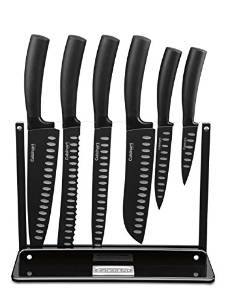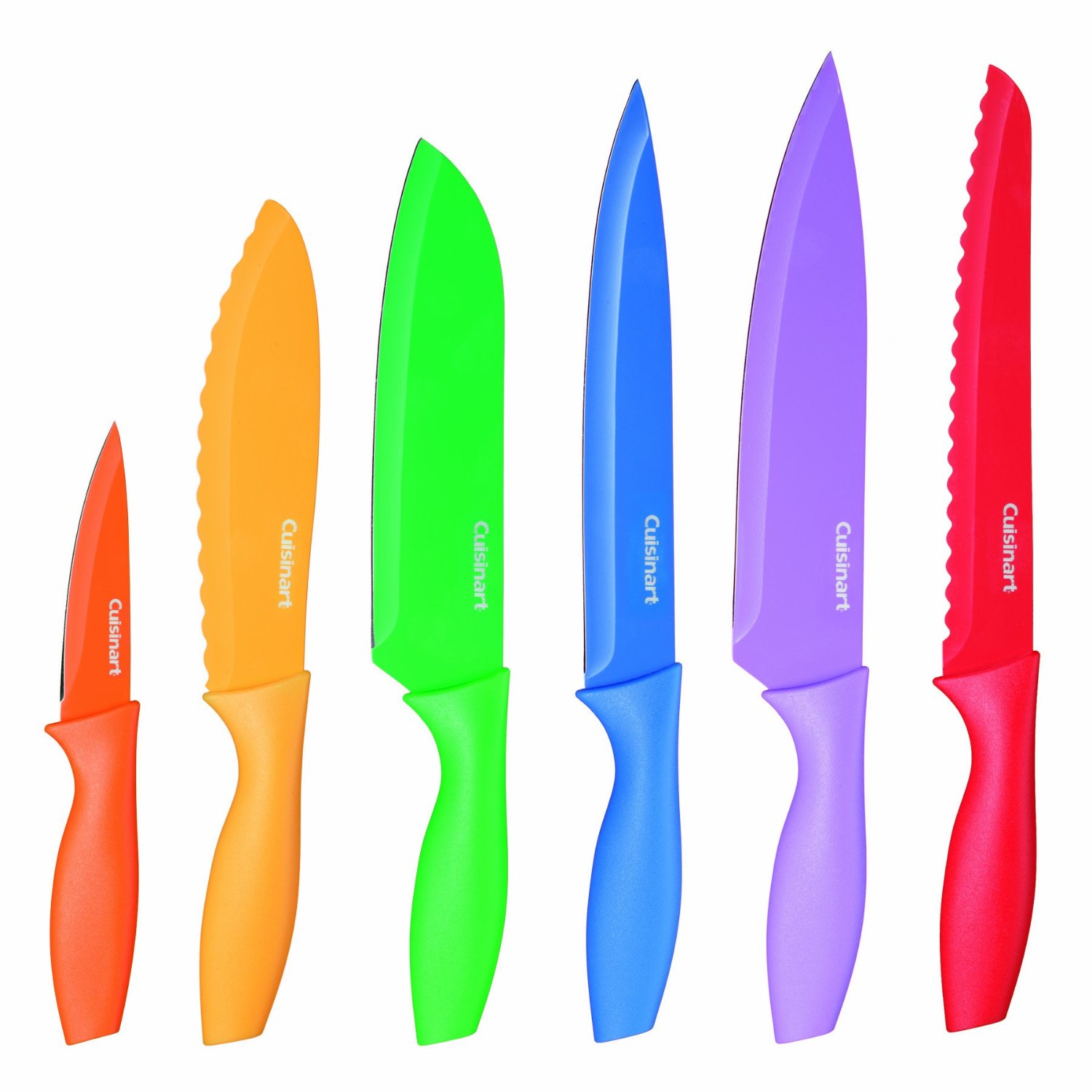When you shop for kitchen knives there are a few things to think about because there are different types of kitchen knives for different things. You will need different knives for different purposes. A santoko, or chef’s knife, is important. This knife is long enough to use for slicing and carving. If you only had one knife, a chef’s knife is the one to go for.
The next knife you will need is one you can dice, mince and chop with. This would be a utility, usuba or paring knife. Any of these would be ideal for preparing the ingredients to add to a dish.
A long, thin knife like a carver or slicer is good for cutting meat, fish and poultry. The shape causes less friction than a wider knife. A granton blade knife has spots on the blade to cut down on friction.
If you want to slice delicate foods such as crab, eel or fish to make sashimi or sushi, a thin-bladed knife is great.
Some people think a cleaver is only for meat cutting but you can use a cleaver for slicing and dicing your herbs and vegetables too. Have a look in any kitchenware shop and you will see many different knives. If you like to cook you will probably already have a selection of knives in the kitchen rather than just one or two. Kitchen knives can perform different tasks like slicing, filleting or chopping but they all have the same parts more or less. Now you see why having various types of kitchen knives is a must.
Types of Kitchen Knives: Anatomy of a Kitchen Knife
The blade of a kitchen knife is obviously important since this is the part that cuts. The quality of the blade affects how well the knife will work. High quality kitchen knives make food preparation easier.
The bolster of a knife is the part between the handle and the blade and it connects them together. It needs to be secure and tight, of course, so the knife does not fall apart when you are cutting with it.

The part of the blade which runs through the center of the handle is called the tang. This gives good balance to the knife and strengthens it, making the knife more durable.
The tang varies in length and might run only part of the way through the knife handle. The best kitchen knives have a tang running the full handle length, making it well balanced and strong.
Cuisinart 7-Piece Nonstick Knife Set, on Amazon
The knife handle wraps around the tang and holds it securely. Knife handles can be made from various materials, including metal, wood and some kinds of plastic.
The knife handle should be both sturdy and comfortable to hold. Sometimes you might need to cut a lot, so you will not want a knife that does not sit well in your hand. The best types of kitchen knives are those which not only perform well but are most comfortable to use.
Now you know which parts of the knife you should check for quality if you want to buy kitchen knives but what are the different types of knife you can get? These are some common knife varieties:
* Boning Knife
* Butter Knife
* Cheese Knife
* Chef’s Knife
* Cleaver
* Deli Knife
* Fillet Knife
* Frozen Food Knife
* Mincing Knife
* Paring Knife
* Sandwich Knife
* Serrated Knife
* Slicing and Carving Knife
* Steak Knife
* Utility Knife
You also get special knives for clams, chestnuts, de-veining, grapefruits, oysters and lettuce. Some cuisines, such as Asian and Japanese, have specialty knives too. The good news is that you do not need all these knives! Just because there are many types of kitchen knives to choose from doesn’t mean you need (or want) every single one.
Every knife is useful for something but most people can happily get along with just the essential, most versatile kitchen knives.
